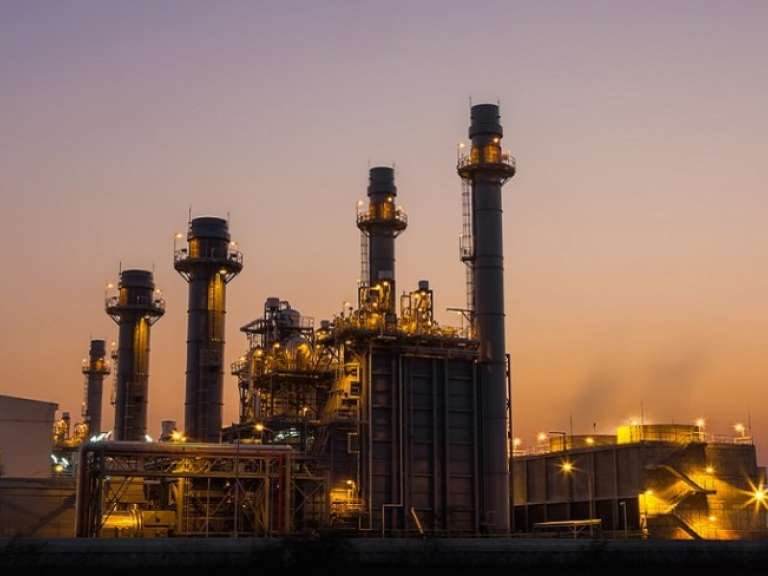Complementing Renewable Energy With Gas Turbines
Penny HitchinAlongside renewable energy technologies, the role of gas turbines in the 21st century electricity mix is assured.

Renewable energy and natural gas are the big winners in the race to meet the demand for power over the next 25 years, according to the 2016 World Energy Outlook. The rapid growth in renewables—notably wind and solar power—is changing the electricity supply landscape and how gas turbines are being called on to generate to the grid. The modern power grid needs intelligent resources able to ramp up and down swiftly, efficiently, and repeatedly.
Increasingly, network operators are giving dispatch priority to renewable energy. Due to these industry changes, gas turbine operators are taking on an additional new role: switching from providing baseload to providing power at times of peak demand. Plant flexibility is critical for on-call gas turbine generation. Gas turbine plants that can be dispatched within minutes are important assets for balancing electric system loads and maintaining grid reliability.
Simple cycle gas turbines have traditionally served as peaking units because they can be started within minutes and ramped up and down quickly. They are less thermodynamically efficient (<; 40 percent) than combined cycle turbine plants but can be profitably deployed during peak times when the price paid for electricity is higher.
Reserve turbines can be kept spinning—either without producing any energy or operating below optimum output—and brought rapidly online if required. However, additional fuel is required to ramp up and operate these turbines, even if they're not synched with the grid. This increases emissions and reduces the net efficiency of the power system. Operating at lower loads may mean decreased combustion temperature and less conversion of CO to CO2.
Depending on environmental permit requirements, plant configuration, and post-combustion emissions-control systems, the minimum environmental load for most gas turbines is generally about half of full outputs. However, through the use of modern control systems, managers have the ability to improve efficiency in this area.
OEMs are designing upgraded control technologies that improve emissions compliance in turndown and minimize efficiency impacts at part load. For example, the use of variable guide vanes decreases compressor mass flow, and refinements to combustion chamber design, such as sequential firing (reheat), produces higher combustion temperatures while operating at low loads. Similarly, software upgrades in the control system can fine tune combustion temperatures, enabling the gas turbine to maintain a higher level of output when the external temperature drops.
The same software can adjust operators' control of the water spray within heat recovery steam generators. The steam temperature can now be maintained using a model-based control approach, anticipating the attemperation requirement based on the gas turbine activity. This means operators do not have to suppress the temperature, which, in turn, stays more stable, increasing steam turbine efficiency and reducing thermal and mechanical wear.
Improving air compression, sealing technology, and optimizing the hot gas path lifetime and turbine inlet temperature levels may also achieve marginal gains. There are new, efficient combustion systems optimized for part-load performance, which, in some cases, allow the unit to operate at as low as 10 percent load while maintaining emissions compliance.
Frequent switching on and off of a plant imposes stresses on the equipment, so it can be beneficial to augment the traditional interval-based maintenance with condition monitoring to enable timely preventative maintenance. Coupling intelligent devices with intelligent networks can provide insights into previously unavailable conditions in the operational heart of the plant.
Sophisticated wireless instrumentation can be deployed to collect a variety of new data sets for rotating machinery. For instance, monitoring lubrication oil for the number and size of particles provides significant information about asset wear, while retrofitted networks and sensors can measure temperature, pressure, vibration, and flow data details. Collecting and analyzing big data about equipment health—especially at specialist remote data centers—allows for early fault detection and maintenance.
These sophisticated and complex systems are expensive to run and maintain. In a typical CCGT plant with plant efficiencies of over 50 percent, maintenance costs may represent up to half of the total cost of electricity production. However, the aggregation of marginal gains combined with strategic continuous improvement techniques can have a strong impact on productivity and cost reduction overall.
Gas turbines are the choice fossil-fuel technology, offering lower emissions than other hydrocarbons, operational flexibility, and the potential for high cycling and peaking, fast start-ups, and load ramps. Alongside renewable energy technologies, the role of gas turbines in the 21st-century electricity mix is assured, but operators will need to leverage new turbine control and monitoring technologies now in order to remain competitive long-term.
Power plant managers should keep watch for energy industry trends in 2017: rise of distributed generation, fuel mix changes, digital technology, and more.
Smart appliances, electric vehicles, and the smart grid will all play a vital role in consumer energy demand management.
Cities are financing energy projects for sustainability through conventional means such as taxes and bonds, and through innovative mechanisms like intracting and crowdfunding.